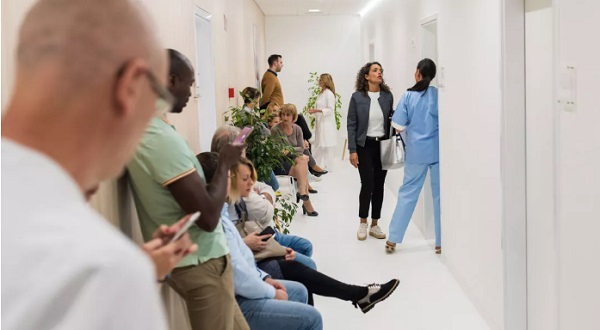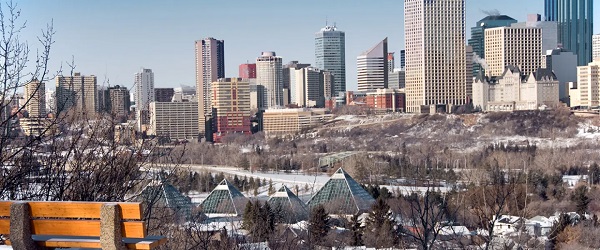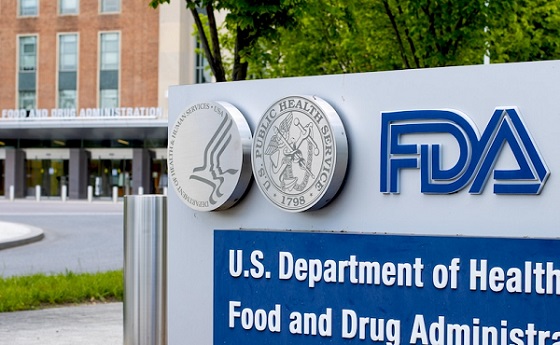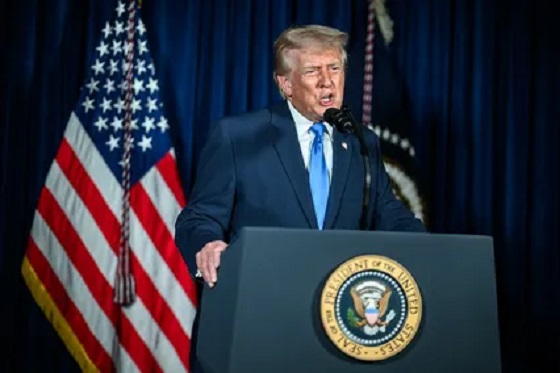Alberta
Watch: Live coverage of Premier Kenney and Dr. Deena Hinshaw: Alberta’s Relaunch Strategy

From the Province of Alberta
Below is the full release and information on Alberta’s phased relaunch plan
Alberta’s safely staged COVID-19 relaunch
A phased relaunch will put Albertans’ safety first as we gradually reopen closed businesses and services and get people back to work.
“I’m confident Albertans will approach relaunch with the same adaptability and resilience they have shown throughout the COVID-19 pandemic. We will move forward together with care and common sense, knowing tough times are still ahead. We will support and protect vulnerable Albertans and keep them safe as we build our province back up one stage at a time.” Jason Kenney, Premier
It is because Albertans have acted responsibly, respecting public health advice, that we have been able to limit the spread of COVID-19, keep localized outbreaks within the capacity of our health-care system, and now take the first incremental steps to reopen some businesses and services.
Early actions
The plan to move forward requires careful and ongoing monitoring and respecting all guidelines outlined by the chief medical officer of health:
- Alberta Health Services will resume some scheduled, non- urgent surgeries as soon as May 4.
- Dental and other health-care workers, such as physiotherapists, speech language pathologists, respiratory therapists, audiologists, social workers, occupational therapists, dieticians and more, will be allowed to resume services starting May 4, as long as they are following approved guidelines set by their professional colleges.

Alberta Parks’ online reservation system will be available May 14th. Photo by Government of Alberta
Recognizing the role that access to the outdoors and recreation in the outdoors plays to Albertans’ sense of well- being, access to provincial parks and public lands will be re- opened using a phased approach, beginning with:
- Vehicle access to parking lots and staging areas in parks and on public lands opening May 1.
- Opening a number of boat launches in provincial parks on May 1 and working to have them all open by May 14. Check albertaparks.ca for the status of boat launches.
- Government is working hard to make campsites available as soon as possible, with the goal to have as many open as possible by June 1 so Albertans can enjoy our parks while adhering to current health orders. At this time, sites are open to Albertans only. Check albertaparks.ca for updates.
- Group and comfort camping will not be offered. Campground facility access restrictions to areas such as showers, picnic and cooking shelters will also be posted to albertaparks.ca.
- Alberta Parks’ online reservation system will be available May 14 to book site visits beginning June 1. Out-of-province bookings will not be processed.
- No washrooms or garbage pickup will be available within provincial parks at this time. These services will be available as soon as Alberta Environment and Parks brings staff back. These seasonal positions represent an important opportunity for Albertans to secure employment during challenging economic times.
- Fire bans in parks, protected areas and the Forest Protection Area remain in place.
- No off-highway vehicle restrictions are currently in place. Local restrictions may be required if the risk for wildfires increases.
- Private and municipal campgrounds and parks can open with physical distancing restrictions, under their own local authority.
- Golf courses can open on May 4, with restrictions including keeping clubhouses and pro shops closed. On-site shops and restaurants can open in stage one, consistent with other businesses and retailers.
Requirements to move to next stage; Additional restrictions will be lifted in stages when safe.
Before we move to stage one, several safeguards will be put in place:
- Enhancing our nation-leading COVID-19 testing capacity at the highest level in Canada.
- Robust and comprehensive contact tracing, aided by technology, to quickly notify people who may have been exposed.
- Support for those who test positive for COVID-19, to enable isolation and effectively contain the spread.
- Stronger international border controls and airport screening, especially for international travellers.
- Rules and guidance for the use of masks in crowded spaces, especially on mass transit.
- Maintaining strong protections for the most vulnerable, including those in long-term care, continuing care and seniors lodges.
A rapid response plan is in place in the event of possible outbreaks of COVID-19. This includes outbreak protocols to quickly identify close contacts in order to stop spread, making testing widely available including testing those without symptoms in outbreak settings, and providing temporary housing for isolation and other necessary supports for anyone at risk.
Physical distancing requirements of two metres will remain in place through all stages of relaunch and hygiene practices will continue to be required of businesses and individuals, along with instructions for Albertans to stay home when exhibiting symptoms such as cough, fever, shortness of breath, runny nose, or sore throat.

Chief Medical Officer of Health Dr. Deena Hinshaw speaks about the current COVID-19 situation in Alberta.
“There are signs that our collective efforts of physical distancing, good hygiene practices, and staying home when advised are helping to slow the spread. However, we must guard against complacency and be patient to ensure the sacrifices we have already made to contain the virus are not wasted by carelessness as we gradually reopen businesses and services.” Deena Hinshaw, chief medical officer of health
Further opening in stages
Progress to Stage 1 will occur once health measures are achieved to the satisfaction of the government based on the advice of the chief medical officer of health, as early as May 14.
Stage 1 highlights:
With increased infection prevention and controls, to minimize the risk of increased transmission of infections, some businesses and facilities can start to gradually resume operations as early as May 14:
- Post-secondary institutions will continue to deliver courses, however how programs are delivered – whether online, in-person, or a blend – will be dependent on what restrictions remain in place at each relaunch phase.
- The use of masks will be strongly recommended in certain specific crowded public spaces, like mass transit, that do not allow for physical distancing (two metres apart).
Still not permitted in stage 1:
- Gatherings of more than 15 people. (Gatherings of 15 people or fewer must follow personal distancing and other public health guidelines.)
- Arts and culture festivals, major sporting events, and concerts, all of which involve close physical contact.
- Movie theatres, theatres, pools, recreation centres, arenas, spas, gyms and nightclubs will remain closed.
- Visitors to patients at health-care facilities will continue to be limited.
- In-school classes for kindergarten to Grade 12 students.
Recommendations:
- Non-essential travel, especially travel outside the province, is not recommended.
- Remote working is advised where possible.
Stage 2 highlights:
- Timing of this stage will be determined by the success of Stage 1, considering the capacity of the health-care system and continued limiting and/or reduction of the rate of infections, hospitalization and ICU cases.
- Will allow additional businesses and services to reopen and resume operations with two metre physical distancing requirements and other public health guidelines in place. This includes:
- Potential kindergarten to Grade 12 schools, with restrictions.
- More scheduled surgeries, including backlog elimination.
- Personal services, such as artificial tanning, esthetics, cosmetic skin and body treatments, manicures, pedicures, waxing, facial treatments, massage and reflexology.
- Permitting of some larger gatherings (number of people to be determined as we learn more about the levels of risk for different activities) in some situations.
- Movie theatres and theatres open with restrictions.
Visitors to patients at health-care facilities will continue to be limited.
Still not permitted in stage 2:
- Nightclubs, gyms, pools, recreation centres, and arenas will remain closed.
- Arts and culture festivals, concerts, attendance at major sporting events and other mass gatherings will continue to not be permitted.
Recommendations:
- Non-essential travel is not recommended.
Stage 3 highlights:
Timing of this stage is to be determined based on the success of stages 1 and 2 and will involve:
- Fully reopening all businesses and services, with some limited restrictions still in place.
- Permitting larger gatherings (number of people to be determined).
- Permitting arts and culture festivals, concerts and major sporting events with some restrictions.
- Permitting nightclubs, gyms, pools, recreation centres and arenas to reopen with restrictions.
- Resuming industry conferences with restrictions.
- No restrictions on non-essential travel.
Quick facts
- Relaunch stages will also include an evaluation and monitoring period to determine if restrictions should be adjusted up or down. Triggers that will inform decisions on the lessening or tightening of restrictions include hospitalizations and intensive care unit (ICU) occupancy.
- Confirmed cases and rates of new infections will be monitored on an ongoing basis to inform proactive responses in localized areas of the province.
- Decisions will be applied at both provincial and local levels, where necessary. While restrictions are gradually eased across the province, an outbreak may mean that they need to be strengthened temporarily in a local area.
- Faith-based organizations are an essential part of the lives of Albertans. They continue to be able to practice, subject to public health direction, including mass gatherings and physical distancing. Government is working with faith-based organizations to learn from past outbreaks and provide guidance related to specific practices including singing and other traditions to ensure safety while supporting social connection.
Alberta
Alberta’s new diagnostic policy appears to meet standard for Canada Health Act compliance

From the Fraser Institute
By Nadeem Esmail, Mackenzie Moir and Lauren Asaad
In October, Alberta’s provincial government announced forthcoming legislative changes that will allow patients to pay out-of-pocket for any diagnostic test they want, and without a physician referral. The policy, according to the Smith government, is designed to help improve the availability of preventative care and increase testing capacity by attracting additional private sector investment in diagnostic technology and facilities.
Unsurprisingly, the policy has attracted Ottawa’s attention, with discussions now taking place around the details of the proposed changes and whether this proposal is deemed to be in line with the Canada Health Act (CHA) and the federal government’s interpretations. A determination that it is not, will have both political consequences by being labeled “non-compliant” and financial consequences for the province through reductions to its Canada Health Transfer (CHT) in coming years.
This raises an interesting question: While the ultimate decision rests with Ottawa, does the Smith government’s new policy comply with the literal text of the CHA and the revised rules released in written federal interpretations?
According to the CHA, when a patient pays out of pocket for a medically necessary and insured physician or hospital (including diagnostic procedures) service, the federal health minister shall reduce the CHT on a dollar-for-dollar basis matching the amount charged to patients. In 2018, Ottawa introduced the Diagnostic Services Policy (DSP), which clarified that the insured status of a diagnostic service does not change when it’s offered inside a private clinic as opposed to a hospital. As a result, any levying of patient charges for medically necessary diagnostic tests are considered a violation of the CHA.
Ottawa has been no slouch in wielding this new policy, deducting some $76.5 million from transfers to seven provinces in 2023 and another $72.4 million in 2024. Deductions for Alberta, based on Health Canada’s estimates of patient charges, totaled some $34 million over those two years.
Alberta has been paid back some of those dollars under the new Reimbursement Program introduced in 2018, which created a pathway for provinces to be paid back some or all of the transfers previously withheld on a dollar-for-dollar basis by Ottawa for CHA infractions. The Reimbursement Program requires provinces to resolve the circumstances which led to patient charges for medically necessary services, including filing a Reimbursement Action Plan for doing so developed in concert with Health Canada. In total, Alberta was reimbursed $20.5 million after Health Canada determined the provincial government had “successfully” implemented elements of its approved plan.
Perhaps in response to the risk of further deductions, or taking a lesson from the Reimbursement Action Plan accepted by Health Canada, the province has gone out of its way to make clear that these new privately funded scans will be self-referred, that any patient paying for tests privately will be reimbursed if that test reveals a serious or life-threatening condition, and that physician referred tests will continue to be provided within the public system and be given priority in both public and private facilities.
Indeed, the provincial government has stated they do not expect to lose additional federal health care transfers under this new policy, based on their success in arguing back previous deductions.
This is where language matters: Health Canada in their latest CHA annual report specifically states the “medical necessity” of any diagnostic test is “determined when a patient receives a referral or requisition from a medical practitioner.” According to the logic of Ottawa’s own stated policy, an unreferred test should, in theory, be no longer considered one that is medically necessary or needs to be insured and thus could be paid for privately.
It would appear then that allowing private purchase of services not referred by physicians does pass the written standard for CHA compliance, including compliance with the latest federal interpretation for diagnostic services.
But of course, there is no actual certainty here. The federal government of the day maintains sole and final authority for interpretation of the CHA and is free to revise and adjust interpretations at any time it sees fit in response to provincial health policy innovations. So while the letter of the CHA appears to have been met, there is still a very real possibility that Alberta will be found to have violated the Act and its interpretations regardless.
In the end, no one really knows with any certainty if a policy change will be deemed by Ottawa to run afoul of the CHA. On the one hand, the provincial government seems to have set the rules around private purchase deliberately and narrowly to avoid a clear violation of federal requirements as they are currently written. On the other hand, Health Canada’s attention has been aroused and they are now “engaging” with officials from Alberta to “better understand” the new policy, leaving open the possibility that the rules of the game may change once again. And even then, a decision that the policy is permissible today is not permanent and can be reversed by the federal government tomorrow if its interpretive whims shift again.
The sad reality of the provincial-federal health-care relationship in Canada is that it has no fixed rules. Indeed, it may be pointless to ask whether a policy will be CHA compliant before Ottawa decides whether or not it is. But it can be said, at least for now, that the Smith government’s new privately paid diagnostic testing policy appears to have met the currently written standard for CHA compliance.

Lauren Asaad
Policy Analyst, Fraser Institute
Alberta
Housing in Calgary and Edmonton remains expensive but more affordable than other cities

From the Fraser Institute
By Tegan Hill and Austin Thompson
In cities across the country, modest homes have become unaffordable for typical families. Calgary and Edmonton have not been immune to this trend, but they’ve weathered it better than most—largely by making it easier to build homes.
Specifically, faster permit approvals, lower municipal fees and fewer restrictions on homebuilders have helped both cities maintain an affordability edge in an era of runaway prices. To preserve that edge, they must stick with—and strengthen—their pro-growth approach.
First, the bad news. Buying a home remains a formidable challenge for many families in Calgary and Edmonton.
For example, in 2023 (the latest year of available data), a typical family earning the local median after-tax income—$73,420 in Calgary and $70,650 in Edmonton—had to save the equivalent of 17.5 months of income in Calgary ($107,300) or 12.5 months in Edmonton ($73,820) for a 20 per cent down payment on a typical home (single-detached house, semi-detached unit or condominium).
Even after managing such a substantial down payment, the financial strain would continue. Mortgage payments on the remaining 80 per cent of the home’s price would have required a large—and financially risky—share of the family’s after-tax income: 45.1 per cent in Calgary (about $2,757 per month) and 32.2 per cent in Edmonton (about $1,897 per month).
Clearly, unless the typical family already owns property or receives help from family, buying a typical home is extremely challenging. And yet, housing in Calgary and Edmonton remains far more affordable than in most other Canadian cities.
In 2023, out of 36 major Canadian cities, Edmonton and Calgary ranked 8th and 14th, respectively, for housing affordability (relative to the median after-tax family income). That’s a marked improvement from a decade earlier in 2014 when Edmonton ranked 20th and Calgary ranked 30th. And from 2014 to 2023, Edmonton was one of only four Canadian cities where median after-tax family income grew faster than the price of a typical home (in Calgary, home prices rose faster than incomes but by much less than in most Canadian cities). As a result, in 2023 typical homes in Edmonton cost about half as much (again, relative to the local median after-tax family income) as in mid-sized cities such as Windsor and Kelowna—and roughly one-third as much as in Toronto and Vancouver.
To be clear, much of Calgary and Edmonton’s improved rank in affordability is due to other cities becoming less and less affordable. Indeed, mortgage payments (as a share of local after-tax median income) also increased since 2014 in both Calgary and Edmonton.
But the relative success of Alberta’s two largest cities shows what’s possible when you prioritize homebuilding. Their approach—lower municipal fees, faster permit approvals and fewer building restrictions—has made it easier to build homes and helped contain costs for homebuyers. In fact, homebuilding has been accelerating in Calgary and Edmonton, in contrast to a sharp contraction in Vancouver and Toronto. That’s a boon to Albertans who’ve been spared the worst excesses of the national housing crisis. It’s also a demographic and economic boost for the province as residents from across Canada move to Alberta to take advantage of the housing market—in stark contrast to the experience of British Columbia and Ontario, which are hemorrhaging residents.
Alberta’s big cities have shown that when governments let homebuilders build, families benefit. To keep that advantage, policymakers in Calgary and Edmonton must stay the course.
-

 Health1 day ago
Health1 day agoFDA warns ‘breast binder’ manufacturers to stop marketing to gender-confused girls
-

 Daily Caller1 day ago
Daily Caller1 day agoTrump Reportedly Escalates Pressure On Venezuela With Another Oil Tanker Seizure
-

 espionage2 days ago
espionage2 days agoCarney Floor Crossing Raises Counterintelligence Questions aimed at China, Former Senior Mountie Argues
-

 Business21 hours ago
Business21 hours agoThere’s No Bias at CBC News, You Say? Well, OK…
-

 Business2 days ago
Business2 days agoTaxing food is like slapping a surcharge on hunger. It needs to end
-

 Health2 days ago
Health2 days agoAll 12 Vaccinated vs. Unvaccinated Studies Found the Same Thing: Unvaccinated Children Are Far Healthier
-

 Energy2 days ago
Energy2 days ago75 per cent of Canadians support the construction of new pipelines to the East Coast and British Columbia
-

 International10 hours ago
International10 hours agoAustralian PM booed at Bondi vigil as crowd screams “shame!”








